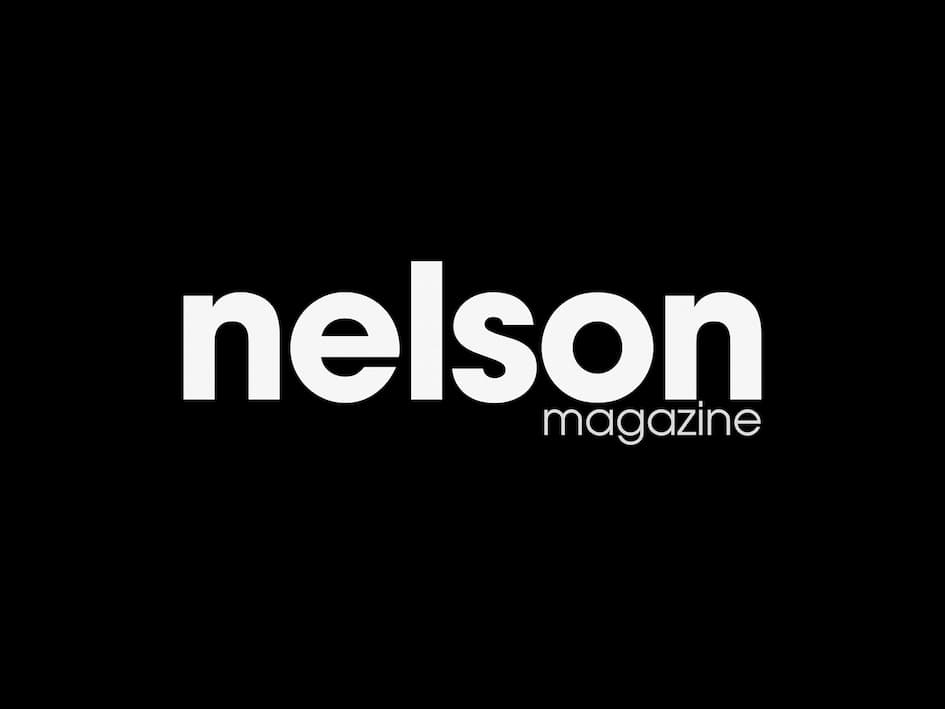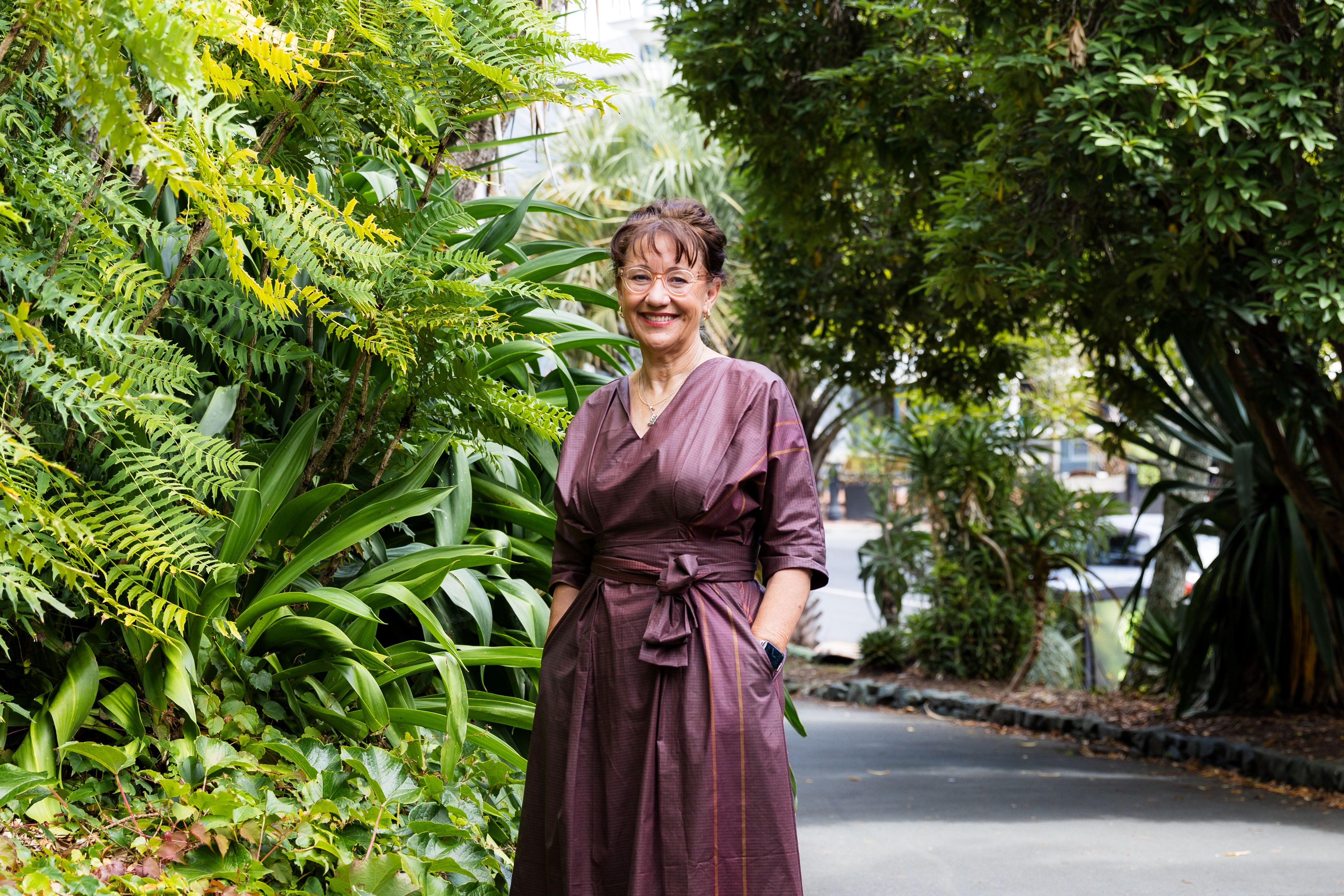From hustle to heart


Clare Haycock traded her 30-year career in radio and television to become the general manager of the Care Foundation.
Taking the leap from the corporate world into the not-for-profit sector isn’t without its challenges, but taking on new challenges seems to be part of its appeal.
Words: Judene Edgar | Photos: Tessa Claus
The word ‘passion’ can be overused, but nonetheless, there’s no better way to describe how she feels about her latest role, says The Care Foundation’s general manager, Clare Haycock.
After 30-something years working in the fast-paced world of radio and television, Clare returned to her hometown of Nelson looking for something different – something less demanding than the long work weeks she was used to, yet something that would still provide her with a challenge. “I met and worked with some incredible people over the years,” she says. “It was a tough business, and I worked very hard,” but she says the time was right to shift back and test herself with a new challenge.
While Clare wasn’t sure what she was exactly looking for, she didn’t think she’d find it all, plus more, in a part-time role for a Nelson charity. But the ‘something more’ is the people, according to Clare. “The people working in health are remarkable,” she says. “And so are the people that support them.”
The Care Foundation (previously the Nelson-Marlborough Hospitals Charitable Trust) is the Top of the South health charity covering Nelson, Tasman and Marlborough. Originally established to administer the bequests, grants and donations given to the former District Health Board, the trust is now a separate entity with an independent board that works in close partnership with the Nelson and Wairau hospitals and staff.
Clare explains that, like schools, there’s a void between what the government funds and what the community needs, and this is where the trust comes in. “We try and help people to stay out of hospital, but if they find themselves needing hospital care, then we try and make their stay more comfortable.” Some of their most recent projects include funding murals throughout the paediatric units in Nelson and Wairau, scholarships for health workers, a Community Health Lecture series, equipment for the nursing clinic at Victory Community Centre, and a post-natal course in Marlborough.
Funding challenges is a common theme for not-for-profit organisations. Each year Nelson Tasman Hospice needs to fill a $4 million void, according to head of supporter engagement and income development Donna Ching-Tregidga; that’s a nearly $11,000-a-day challenge that she doesn’t take lightly.

After 22 years working for World of WearableArt (WOW) in different roles, including most recently head of marketing and strategy, she felt like the time was right for a change, for something different. “I feel really blessed to have had the experiences and mentorship I had at WOW working alongside founder Dame Suzie Moncrieff and her sister Heather Palmer,” but commercially staging an annual event of this scale and the pressure to “always be on”, didn’t allow time to breathe.
With Covid-19 came show cancellations, restructuring and significant upheaval. Equally, after helping grow the show from audiences of 7,000 to 60,000 a year, along with the shift to Wellington, she was ready for something new. “I really wanted to do something totally local and make a difference for my community,” says Donna.
Shortly after leaving her job at WOW she was at a funeral and someone spoke about hospice and what a game-changer it was for them and their family. Less than a week later the job came up; “now that’s a challenge I thought.”
Making a difference was also high on the list for Nelson Environment Centre’s chief executive officer (CEO) Anton Drazevic. The former creative director and agency owner went from serving some of the globe’s largest corporate clients – L’Oreal, Marsh, Macquarie Bank to name but a few – to serving food to people in need.
Working 80 plus hours a week with a young family simply became untenable, says Anton. Determined to ditch the workaholic lifestyle and find a healthy work-life balance, along with his wife Holly they made a conscious decision to change their life for the sake of their three young children, and themselves.
“The theory was that I was going to go to a lower level, less stressful role,” he says. The role he initially thought would fit the bill was senior communications advisor for the Kaikoura earthquake recovery. While the role was anything but, “from that I truly got the motivation to work for the community,” he says. “The role was about minimising the impacts on the community and representing their needs, and it gave me a real taste for community-focused work”.
“Covid and Kaikoura taught me, in those times of great need, it is the most vulnerable among us that suffer most, and need our support,” says Anton.
Taking the leap from corporate to community was a big step into the unknown for each of them, but one that they haven’t regretted. While it’s not necessarily a huge step down in workload, they all agree that it’s been a huge step up on community impact.
With over 121,000 not-for-profit organisations and around 29,000 registered charities – the highest per capita ratio in the world – New Zealand’s not-for-profit sector is immense. Working across a wide range of sectors including health, environment, housing, sport, social services, arts, transport, culture, and more, it supports people from all walks of life and backgrounds.
“Working with other charities is so important,” says Clare. “We’re not just about building up funds, we’re also about distributing them so that they’re supporting the people and organisations that need them.” While she says the role is so removed from what she’d done in her corporate career, the business experience she had and the skills she’d learnt were totally transferable.
“I’d spent a lot of years having to understand different sectors and what their needs were,” she says. In that regard, she says that understanding people and their needs, especially when it comes to looking after donations and bequests, is no different.
“I always think about the people who gave the money when I distribute their funds and whether they’d be happy,” Clare says. “I do a lot of due diligence to ensure that they’d be happy with where their money has gone and that it’s fulfilling a need.”
The not-for-profit sector makes a huge contribution at an individual, regional and national level. In 2024 the Charities Services annual report stated that not-for-profit organisations contributed 4% ($27.3 billion) to the country's gross domestic product and has a workforce larger than agriculture or tourism. Further, Stats NZ estimated that the value of volunteer labour in the not-for-profit sector is around $4 billion per year.
As well as their own unique challenges, such as funding cuts and a shrinking pool of volunteers, not-for-profit organisations face the same challenging operating environment as any other business, including ensuring compliance with rules and regulations, meeting health and safety requirements, managing climate change impacts, and dealing with cost-of-living pressures.
“At the end of the day, a not-for-profit is a business that needs to make a surplus like any other business – the value is in being able to reinvest back into the community,” says Anton. Similarly, he says that the skills he uses are no different to his corporate roles. “It’s the same interpersonal skills, understanding of rules, regulations and legislation, planning, foresight, goal setting, staff management, work cycles and more.”

The need to be a ‘master of all skills’ is high in the not-for-profit sector, especially smaller organisations that may only have one or two staff. Donna says that what this means is that you need to be an independent thinker, nimble and resilient.
While she acknowledges that the commercial levers and resources aren’t there and there isn’t the same level of wraparound support or infrastructure, being surrounded by inspirational and caring people makes up for it – although both Donna and Anton acknowledged the high burnout rate in the not-for-profit sector. “There’s always more you can do – that’s the bit that’s the most challenging – but you need to be kind to yourself and keep thinking long-term to be sustainable,” says Donna.
Despite his best efforts to strike the work-life balance, Anton acknowledges this can be hard because neither the environment nor hunger takes a holiday over Christmas, so the need to continue is high. “I take great pride in championing an organisation that’s nearly 50 years old and knowing that our efforts have short, medium, and long-term benefits for our community.”
However, he says organisational culture – creating a positive and inclusive working environment for everyone – is critical. “Young people have different drivers, and we need to be mindful of this.”
In Deloitte’s 2024 Gen Z and Millennial Survey, for the majority of Gen Zs (86%) and millennials (89%) having a sense of purpose and working for an organisation whose values align with their own was critical for their job selection and satisfaction. In particular, environmental sustainability was a key driver both of their career decisions and consumer behaviours.
While not-for-profit organisations can be notoriously risk averse, Clare says that “success has many masters, and failure has few”, but that progress doesn’t happen without (calculated) risks. The key, she says, is doing your due diligence to make informed decisions. “But you need to be brave.”
Anton has also applied his corporate strengths and taken some calculated risks, establishing new income streams and enhancing their community impact, such as Kai Rescue which ‘rescues’ food from supermarkets and restaurants that would otherwise go to waste and providing food to people in need. On the back of these successes, over the past seven years the team has grown from 20 to 100 people and turnover has tripled.
“15 years ago, if someone said I’d be working for a not-for-profit in regional New Zealand I would have laughed them out of the room,” says Anton. And his former work mates certainly laughed at him when he told them what he was up to, but the motivator is working for a values-driven organisation.
Similarly, Donna says that “ten years ago I wouldn’t have seen myself in this sort of role, mainly because I didn’t understand the need or the challenge.” Hearing about the deep impact of hospice on patients and their families out in the community, where the vast majority of hospice services are delivered, as well as in the hospice itself and having now seen it for myself really opens your eyes. “It’s very hard to beat supporting patients and their families at this stage of life,” she says. “We all deserve to be supported and given that hospice supports one in three patients that die in our community each year, the reach of our impact is significant.”
“At the end of the day, it’s about thinking where you want to put your energy,” says Clare. “For me, it’s all about the people. It’s good for the soul.”
